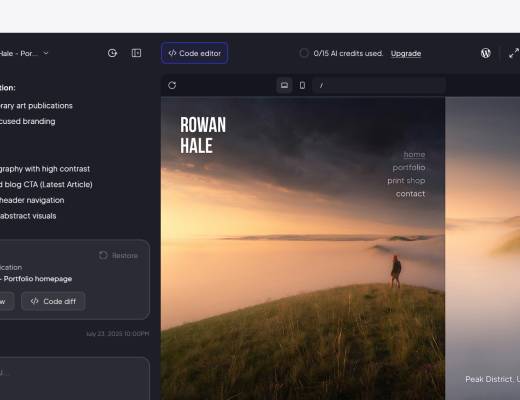The era of easy money in tech didn’t end with a bang—it ended with a slow, awkward silence. One quarter, venture deals were flowing. Next, it felt like someone had pulled the emergency brake. Between rising interest rates, shaky IPO exits, and
growing weariness with unicorns that couldn’t turn a profit, traditional funding channels have shifted into a more cautious and measured rhythm. And early-stage startups, especially those not already plugged into the old-boy networks of Silicon Valley, are starting to notice.
But instead of collapsing under the pressure, many are doing something smarter. They’re looking sideways. Instead of pouring time and resources into chasing the usual suspects, founders are leaning into newer, less flashy capital sources—some of which are proving surprisingly effective. The definition of a viable investor has expanded. The lines between verticals have blurred. And the idea of who gets to fund innovation is undergoing a quiet but powerful rewrite.
The Institutional Hold Has Slipped, and Founders Are Adjusting
There was a time when securing institutional funding was a rite of passage. A startup that couldn’t get a meeting with a top-tier firm was often dismissed before it had a chance to prove itself. However, that dynamic has begun to crack, especially over the past year. As venture capital firms tighten their terms and focus more heavily on later-stage or de-risked opportunities, seed and pre-seed founders are finding fewer doors open to them.
That shift isn’t necessarily a bad thing. The scarcity has prompted a recalibration in how founders assess risk, pitch value, and build teams. It’s also pushed them toward smarter, leaner growth models and encouraged partnerships with investors who bring more than a check to the table. And that includes a group that has recently stepped out from the shadows with sharper instincts than many expected:
B2B seed stage SaaS investors.
They’ve quietly become one of the most reliable lifelines for early-stage companies focused on enterprise solutions. These investors aren’t dazzled by hype—they’re looking for viable
problems being solved in practical ways. They tend to be former founders, operators, or ecosystem players who understand what real traction looks like before product-market fit has fully taken shape. Their influence is growing precisely because they aren’t caught up in the same cycles of groupthink that have plagued larger firms in recent years.
Family Offices Are Playing the Long Game—and Winning
Once seen as conservative and slow to move, family offices have become stealth power players in the early-stage startup world. With patient capital and flexible expectations, they’re now actively backing tech innovation in sectors ranging from fintech to clean energy to enterprise SaaS. They’re doing it with an eye toward sustainable returns, but also with a freedom from the traditional fund lifecycle that most venture capital firms can’t match.
The appeal goes both ways. Founders get a stable partner who won’t force premature scaling just to prep for an exit. And family offices get early access to innovation without the performative buzz that can tank a company before it even stabilizes. Many of these investors are diversifying from traditional asset classes, like hedge funds or real estate, and looking to support companies that align with long-term impact goals.
There’s also a growing interest in hybrid models—funding that mixes equity with revenue-based financing or milestone-driven tranches. The result is a capital environment that feels more collaborative and less extractive. Founders aren’t just getting money; they’re getting smarter guidance and a more realistic growth trajectory.
Strategic Capital Is No Longer Just a Corporate Toy
It used to be that when a corporation invested in a startup, it was viewed as a branding exercise or a move to kill competition. But those dynamics are shifting. Corporate VC arms and strategic partners are now acting less like lumbering giants and more like nimble, focused allies. In sectors such as health tech, logistics, and cybersecurity, having the backing of a seasoned player is starting to carry as much weight as traditional institutional investment.
These strategic investors often bring built-in customers, meaningful distribution channels, and deep industry knowledge. They tend to invest not just to bet on a future trend but actually to use the product or integrate the technology. That kind of alignment is hard to come by with generalist firms chasing the next consumer app. The downside, of course, is that strategic capital can come with more strings. But for the right startup, that risk is worth the tradeoff.
Cross-Sector Capital Is Fueling a New Type of Innovation
Here’s where it gets interesting. Some of the most active investors in early-stage tech right now aren’t even traditional tech investors at all. They’re drawing from sectors such as logistics, manufacturing, retail, and construction. They’re
real estate investors looking for smart platforms to manage portfolios, or healthcare executives backing predictive analytics startups. What makes them powerful isn’t their funding experience—it’s their domain expertise.
This kind of cross-pollination is helping build early-stage startups that are better grounded in reality. These investors know the actual problems they face, not just what sounds disruptive in a pitch deck. They’re able to validate use cases quickly, bring in beta users, and pressure-test ideas against real operational needs. For founders, this means shorter feedback loops and faster access to revenue—not just runway.
It also means more flexible deals.
Cross-sector investors are often less concerned with the rigid funding round structure and more focused on outcomes. That creates room for creativity in deal-making, including convertible notes, SAFEs, and even joint ventures. It’s not always the cleanest cap table, but it’s often the most functional one.
Government and Grant Funding Are Becoming Strategic, Not Scrappy
In the past, grant funding was often a side hustle for early-stage startups—an afterthought or a last resort. That perception is changing fast. With billions in innovation-focused funds flowing from federal, state, and even international programs, early-stage startups are waking up to the fact that non-dilutive funding isn’t just free money—it’s smart money.
Governments are increasingly
funding innovation in sectors that have long struggled to secure private capital, including clean energy, advanced manufacturing, public health technology, and climate adaptation tools. Some of the sharpest early-stage companies now view these grants as foundational, rather than supplemental. They develop comprehensive funding strategies that align with national priorities or partner with public institutions.
And the stigma is gone. Getting a Department of Energy grant or a European innovation fund allocation no longer pegs a company as too academic or too slow. It means there’s real substance behind the tech. It’s becoming a mark of seriousness—one that can actually catch the attention of private investors.
Final Takeaway
Funding hasn’t dried up. It’s just moving. The future of startup capital appears broader, smarter, and less predictable than the traditional VC roadmap has ever allowed. The founders who understand this shift—and act accordingly—won’t just survive the downturn. They’ll build companies that were never built to collapse in the first place.
Photo by Austin Distel; Unsplash







